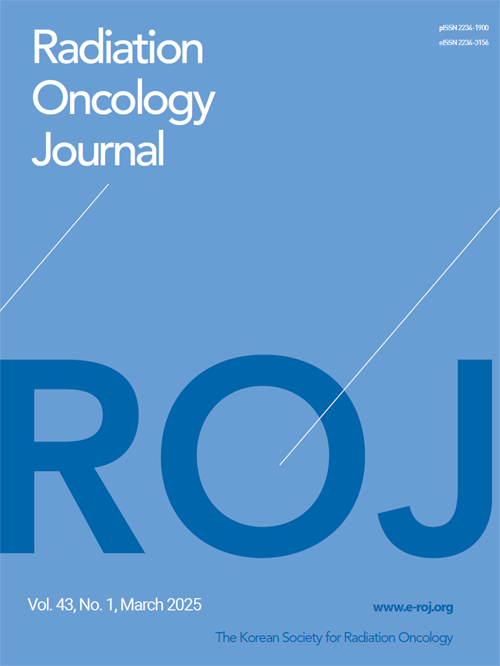Purpose: No guidelines exist to delineate radiation therapy (RT) targets for the treatment of multiple glioblastoma (mGBM). This study analyzes margins around the gross tumor volume (GTV) to create a clinical target volume (CTV), comparing response parameters and modalities of recurrence.
Material and Methods: One-hundred and three mGBM patients with a CTV margin of 2 cm (GTV + 2.0 cm) or 1 cm (GTV + 1.0 cm) were retrospectively analyzed. All patients received a total dose of 59.4-60 Gy in 1.8-2.0 Gy daily fractions, delivered from 4 to 8 weeks after surgery, concomitantly with temozolomide (75 mg/m2). Overall survival (OS) and progression-free survival (PFS) were calculated from the date of surgery until diagnosis of disease progression performed by magnetic resonance imaging and classified as marginal, in-field, or distant, comparing site of progression with dose distribution in RT plan.
Results: OS in mGBM CTV1 group was 11.2 months (95% confidence interval [CI], 10.3-12.1), and 9.2 months in mGBM CTV2 group (95% CI, 9.0-11.3). PFS in mGBM CTV1 group occurred within 8.3 months (95% CI, 7.3-9.3), and 7.3 months in mGBM CTV2 group (95% CI, 6.4-8.1). No difference was observed between the two groups in terms of OS and PFS time distribution. Adjusted to a multivariate Cox risk model, epidermal growth factor receptor amplification resulted a negative prognostic factor for both OS and PFS.
Conclusion: In mGBM, the use of a 1 cm CTV expansion seems feasible as it does not significantly affect oncological outcomes and progression outcome.



